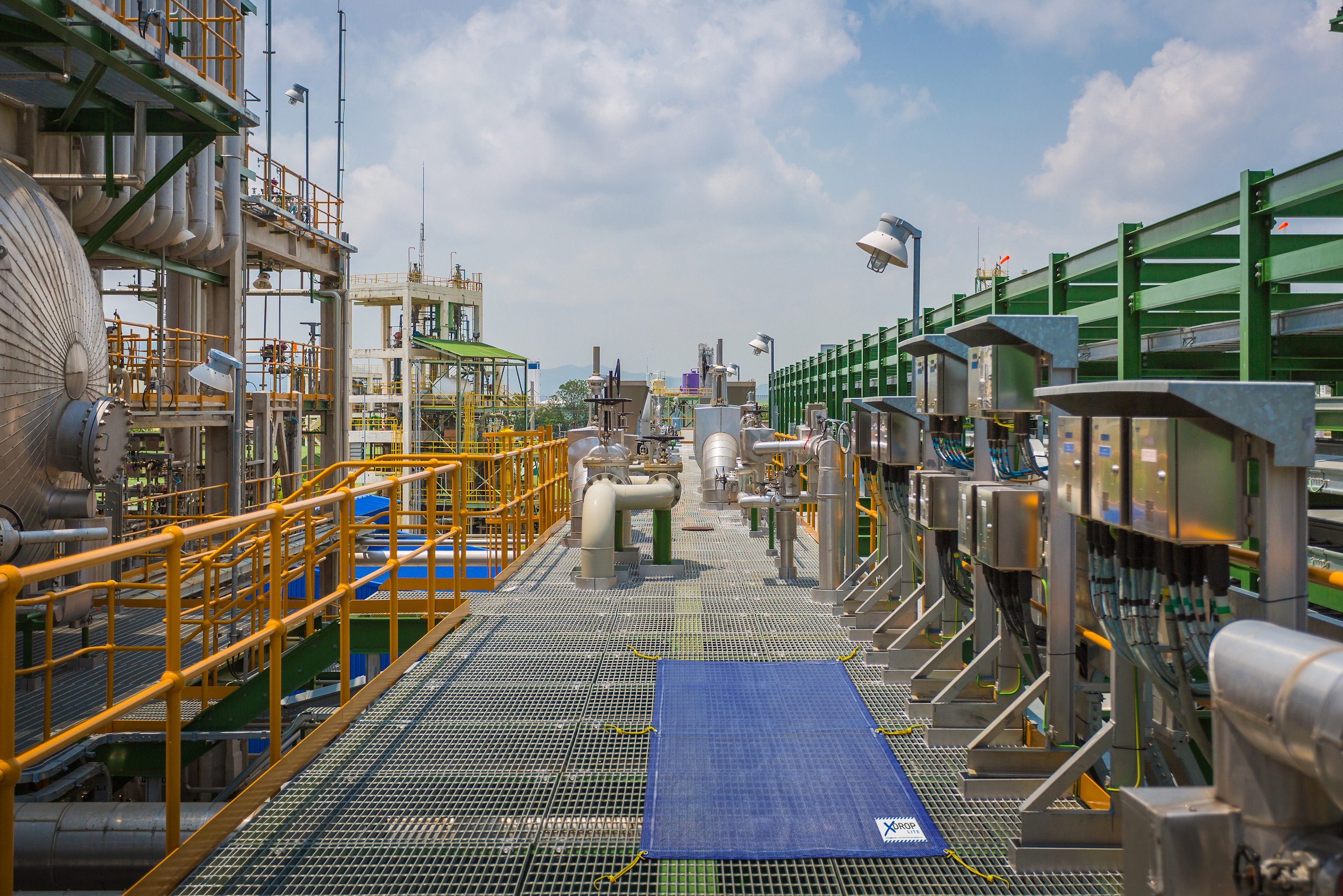Drop Prevention: all you need to know for a safer workspace
When working at heights or on grated flooring, dropped objects such as tools can pose significant safety hazards. Reducing this risk by investing in ‘drop prevention’ equipment is of great importance to ensure a safer workspace.
When working at heights or on grated flooring, dropped objects such as tools can pose significant safety hazards. It is estimated by HSE, that falling objects accounted for 7,000 reported non-fatal injuries, with 75% of them resulting in over 7 days of lost work time each, that works out to be over 36,750 days lost! Making it one of the most common workplace health and safety risks.
These incidents threaten not only the safety of work personnel, but also critical equipment in the impact zone, both of which can be costly, damaging, and counter-productive for companies. Reducing this risk by investing in ‘drop prevention’ equipment is of great importance to ensure a safer workspace.
Why do drops occur in the workplace?
At onshore and offshore facilities, falling or dropped objects can occur for many reasons, including poor maintenance, harsh weather conditions, moving equipment or even human error. This can be a significant risk if best-practice dropped object procedures are not followed. An understanding of the primary causes of these incidents can help conduct safer drop prevention and risk assessment procedures in the future.
Inadequate risk assessment
Risk assessments are key in identifying potential dropped object hazards and implementing prevention procedures. If not completed correctly, or at all, this can lead to missing even obvious risks which result in avoidable accidents and many legal implications.
Failed fixtures and fittings
Failed fixtures can and will often dislodge and fall, especially on offshore industries that face particularly testing conditions such as saltwater corrosion, and high winds. Regular inspections can reduce the risk of dropped objects. A high-quality, durable inspection tagging system will ensure this process is completed correctly.
Human error
Accidents happen and sometimes can’t be helped; however, poor behaviour, neglect or complacency can also lead to dropped object related injuries and fatalities. Proper training, and awareness of hazards can help prevent this from happening. Using drop prevention procedures such as our XDROP mats, will also ensure that even if something is dropped due to human error, no one will get hurt.
Inadequately stored or secured tools
Hand tools, power tools, or even PPE are all examples of tools that should be securely tethered with lanyards or contained in a safe tool store to avoid them falling and injuring someone or damaging machinery or work equipment.
Dropped object prevention: mitigating the risk
There are many things that can be done to minimize or prevent the risk of dropped object incidents. Every workspace is different, with their individual hazards. Establishing your own drop prevention plan that is tailored to suit the particular space and its hazards, will help identify the risks. This will help implement the correct prevention measures needed to avoid injuries or fatalities.
What steps can be taken to prevent dropped object incidents?
- Train employees and visitors on potential hazards and how to avoid them
- Carry out regular risk assessments to identify risks that need to be seen to
- Take note of particular conditions that might elevate the risk such as wind, corrosion, or vibration
- Consider the use of safety mats or ties to secure tools or catch falling objects

DROPPED OBJECT PREVENTION: FAQs
What are the two types of dropped objects?
- Static Dropped Objects: Any object that falls from a stationary position under its own weight.
- Dynamic Dropped Objects: Any object that falls as a result of a secondary force.
What is a Static Dropped Object?
A Static Dropped Object is a any object that falls from its previous position under its own weight (gravity) without any applied force. For example, failure caused by corrosion, vibration or inadequate securing.
What is a Dynamic Dropped Object?
A Dynamic Dropped Object is any object that falls from its previous position due to applied force, eg collisions involving travelling equipment or loads, snagging on machinery or stacked items, motion, helicopter downdraft or severe weather.
How does drop prevention differ from fall prevention?
Drop prevention refers to any provisions in place that aim avoid incidents occurring where items fall from height and cause equipment damage, workforce injury or fatality. Whereas, fall protection is used to prevent personnel falling from a height in hazardous environments.
DROP PREVENTION WITH REGALTAGS
Taking control of your organisation’s safety processes and preventing drop related accidents in the workplace can be done easily and efficiently through the use of our XDROP drop prevention products. At REGALTAGS®, we help brands working in the harshest environments by offering the most durable, custom safety tagging and dropped object prevention solutions.
If you’re looking for a solution that help control your procedures and maximise safety, get in touch with our team of experts today. We’re always happy to answer any questions you have and would love to hear from you.
Subscribe
Join 10,000+ others receiving our monthly updates. Free Tag knowledge delivered straight to your inbox.





